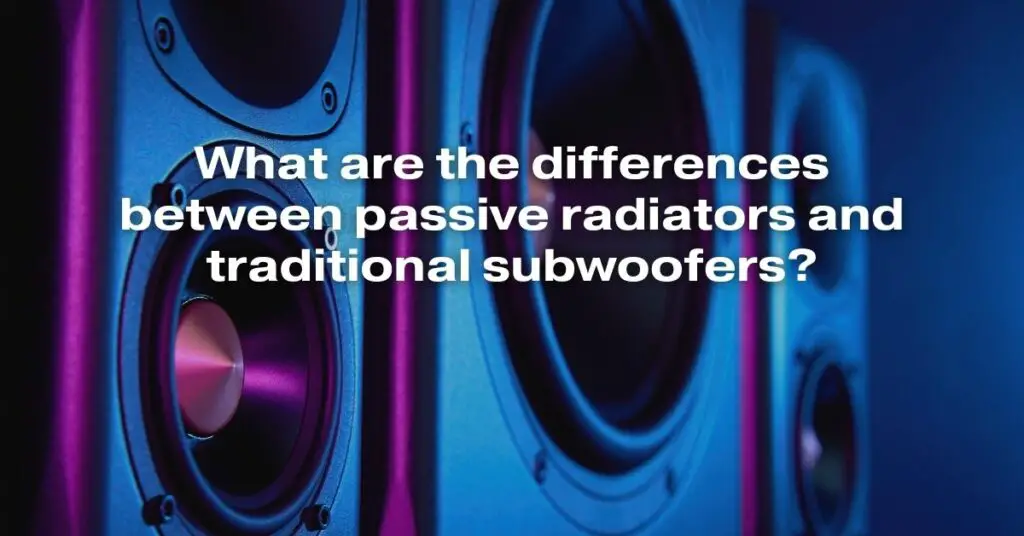In the world of audio, subwoofers play a crucial role in reproducing low-frequency sounds, adding depth and richness to the overall listening experience. While traditional subwoofers rely on active drivers to generate these low frequencies, passive radiators offer an alternative approach that has gained popularity in recent years.
Understanding Passive Radiators
A passive radiator, also known as a drone cone, is essentially a speaker driver without a voice coil or magnet. It consists of a diaphragm, surround, and spider, similar to an active driver, but it does not receive any direct electrical input. Instead, it reacts to the air pressure changes created by an active driver within the same enclosure.
Comparing Passive Radiators and Traditional Subwoofers
The key difference between passive radiators and traditional subwoofers lies in their method of sound production. Traditional subwoofers utilize active drivers, which are powered by an amplifier and directly convert electrical signals into sound waves. Passive radiators, on the other hand, are driven by the air pressure variations generated by an active driver.
Advantages of Passive Radiators
Passive radiators offer several advantages over traditional subwoofers:
-
Extended Low-Frequency Response: Passive radiators can extend the low-frequency response of a subwoofer, allowing it to produce deeper bass tones.
-
Compact Enclosures: Passive radiators can be used in smaller enclosures compared to traditional subwoofers, making them suitable for space-constrained applications.
-
Reduced Port Noise: Unlike ported subwoofers, which can produce “port chuffing” noise at high volumes, passive radiators operate silently.
-
Smoother Transient Response: Passive radiators exhibit a smoother transient response compared to ported subwoofers, resulting in cleaner and more accurate bass reproduction.
Disadvantages of Passive Radiators
Despite their advantages, passive radiators also have some drawbacks:
-
Lower Efficiency: Passive radiators are less efficient than active drivers, requiring more power to achieve the same output level.
-
Limited Output: Passive radiators may not be able to produce the same maximum output levels as traditional subwoofers, especially at very low frequencies.
-
Tuning Complexity: Tuning a passive radiator system can be more complex than tuning a traditional subwoofer, requiring careful consideration of the enclosure design and driver parameters.
Applications of Passive Radiators
Passive radiators are particularly well-suited for applications where space is limited and extended low-frequency response is desired. They are commonly found in:
-
Small Satellite Speakers: Passive radiators can extend the bass response of small satellite speakers without the need for a large subwoofer enclosure.
-
Portable Bluetooth Speakers: Passive radiators are often used in portable Bluetooth speakers to enhance bass response without compromising portability.
-
Home Theater Systems: Passive radiators can be incorporated into home theater subwoofers to provide deeper bass extension and a more compact design.
Conclusion
Passive radiators offer a unique approach to low-frequency sound reproduction, providing extended bass response, compact enclosure sizes, and reduced port noise. While they may not be as efficient or powerful as traditional subwoofers, they are particularly well-suited for space-constrained applications and can deliver impressive bass performance in a smaller footprint.


